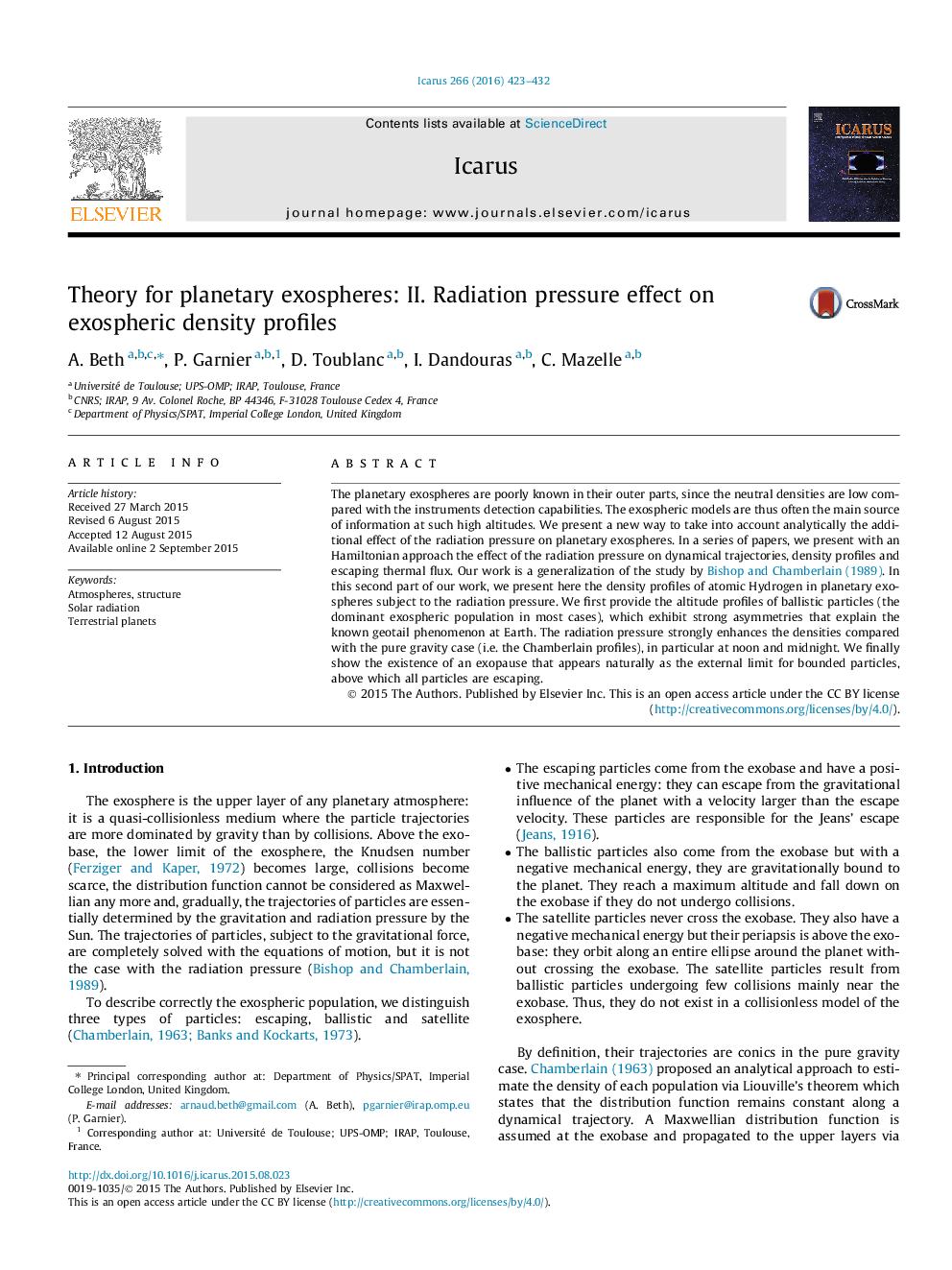| Article ID | Journal | Published Year | Pages | File Type |
|---|---|---|---|---|
| 8135827 | Icarus | 2016 | 10 Pages |
Abstract
The planetary exospheres are poorly known in their outer parts, since the neutral densities are low compared with the instruments detection capabilities. The exospheric models are thus often the main source of information at such high altitudes. We present a new way to take into account analytically the additional effect of the radiation pressure on planetary exospheres. In a series of papers, we present with an Hamiltonian approach the effect of the radiation pressure on dynamical trajectories, density profiles and escaping thermal flux. Our work is a generalization of the study by Bishop and Chamberlain (1989). In this second part of our work, we present here the density profiles of atomic Hydrogen in planetary exospheres subject to the radiation pressure. We first provide the altitude profiles of ballistic particles (the dominant exospheric population in most cases), which exhibit strong asymmetries that explain the known geotail phenomenon at Earth. The radiation pressure strongly enhances the densities compared with the pure gravity case (i.e. the Chamberlain profiles), in particular at noon and midnight. We finally show the existence of an exopause that appears naturally as the external limit for bounded particles, above which all particles are escaping.
Related Topics
Physical Sciences and Engineering
Earth and Planetary Sciences
Space and Planetary Science
Authors
A. Beth, P. Garnier, D. Toublanc, I. Dandouras, C. Mazelle,
